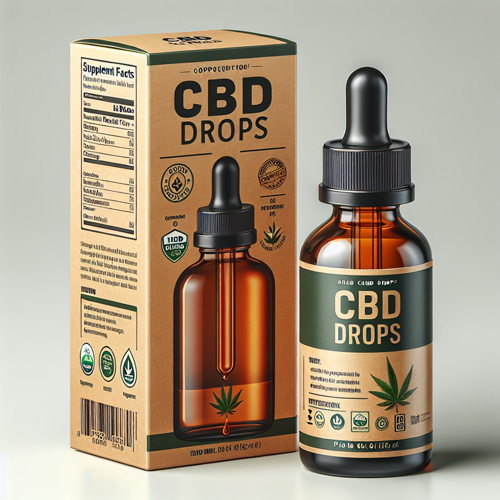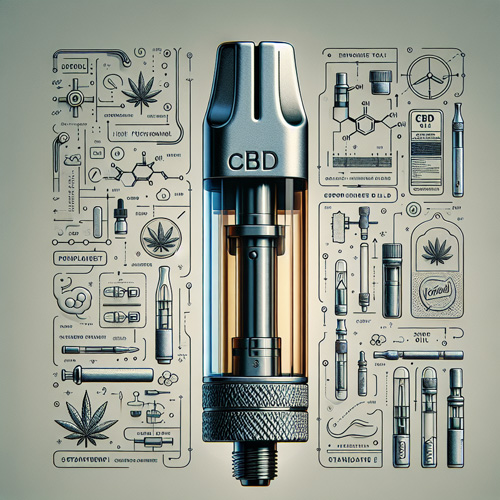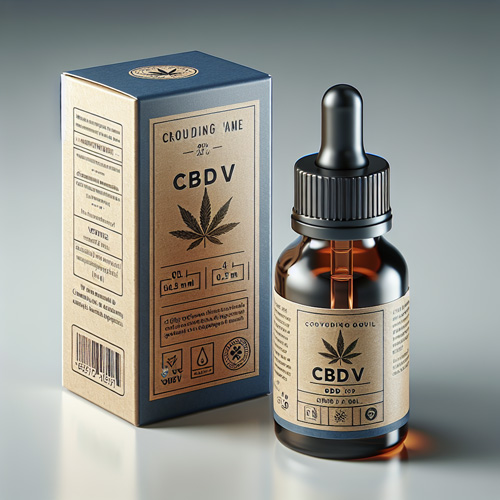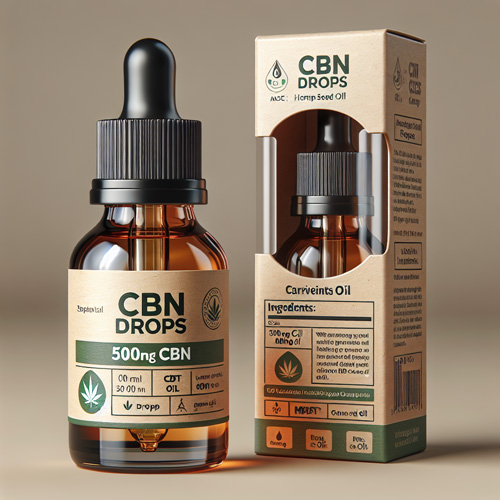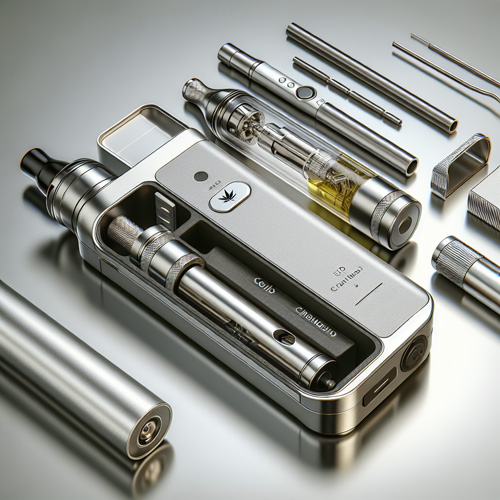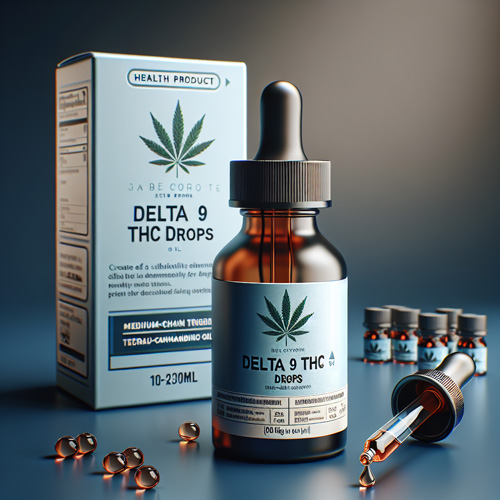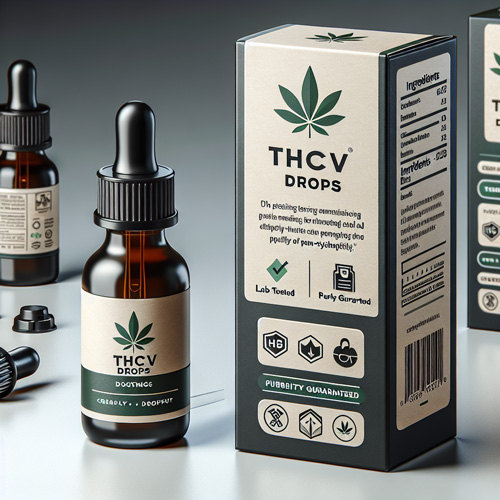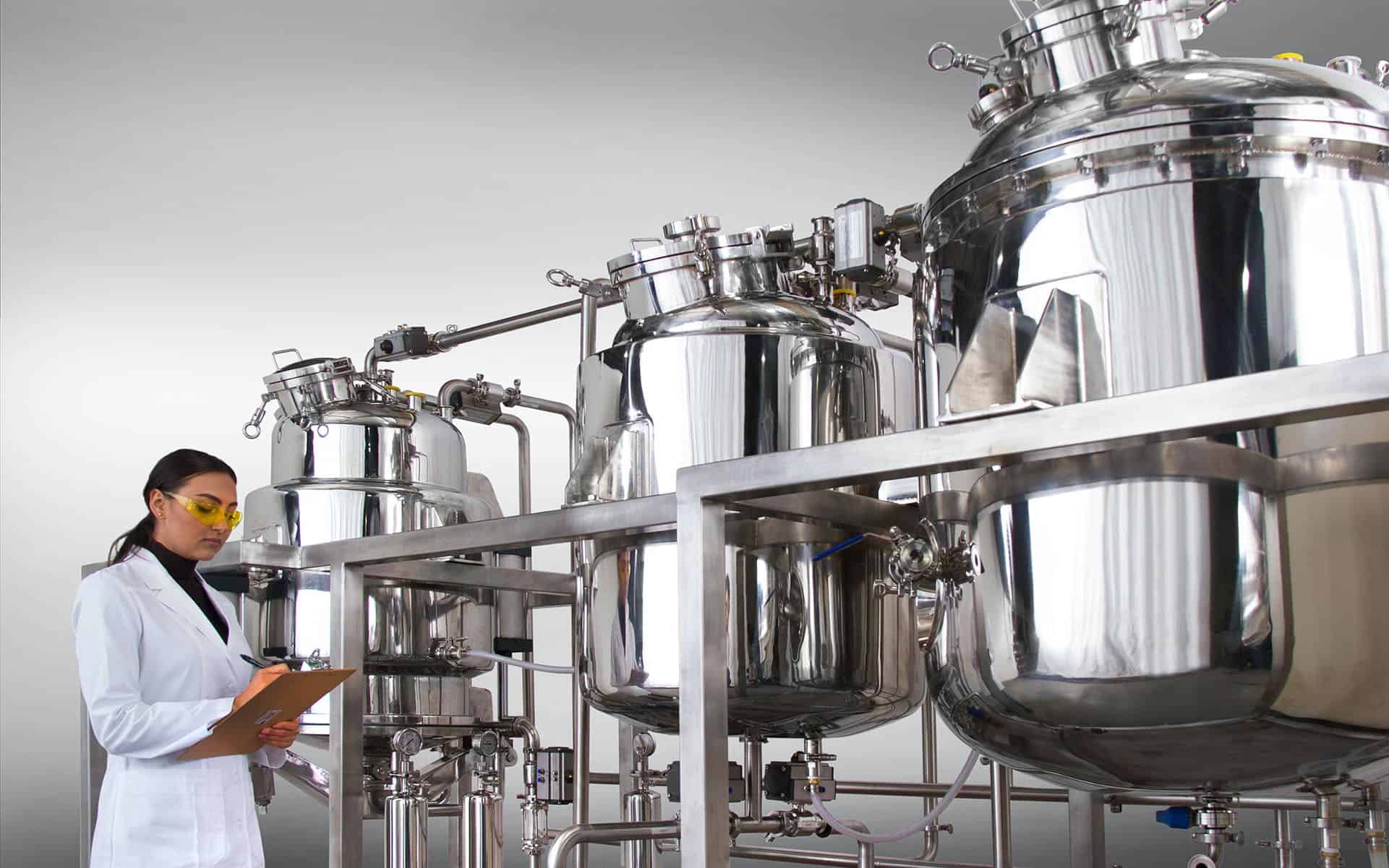
Difference Between Ethanol Extract and CO2 Extract
Definition of Ethanol and CO2 Extraction
Ethanol and CO2 extraction are two popular methods used in the extraction of beneficial compounds from plant materials such as hemp and cannabis.
Both methods have their unique advantages and differences, making them suitable for different applications in the pharmaceutical, food, and beverage industries. In this article, we will explore the definitions and differences between ethanol and CO2 extraction, shedding light on their respective processes and the qualities of the extracts they produce.
Ethanol Extraction:
Ethanol extraction, also known as alcohol extraction, is a solvent-based extraction method that utilizes ethanol as the solvent to extract the desired compounds from the plant matter. Ethanol is a polar solvent, meaning it has the ability to dissolve a wide range of compounds, including both polar and non-polar compounds. This extraction method is commonly used in the food and beverage industry, particularly in the beer industry, for extracting flavors and aromas and maintaining a unique terpene profile. Ethanol extraction is also employed in the cannabis industry to obtain cannabinoids and terpenes from the cannabis plant.
It involves soaking the plant material in ethanol to dissolve the active compounds and then removing the solvent through evaporation or distillation, resulting in a crude extract that can be further processed into various forms such as full-spectrum extracts or CBD oil.
CO2 Extraction:
CO2 extraction, also known as supercritical carbon dioxide gas extraction, is a solvent-based extraction method that utilizes carbon dioxide as the solvent. Unlike ethanol, CO2 is a non-polar solvent, meaning it mainly dissolves non-polar compounds. This method is widely used in the pharmaceutical and botanical industries due to its ability to selectively extract specific compounds while leaving behind unwanted components.
CO2 extraction involves pressurizing and heating carbon dioxide to its supercritical state, where it combines the properties of both a liquid and a gas. In this state, the supercritical CO2 acts as a highly efficient solvent, penetrating the plant material to extract the desired compounds. Once the extraction is complete, the pressure is reduced, and the CO2 evaporates, leaving behind a clean and pure extract that is free from residual solvents.
Ethanol and CO2 extraction are both effective methods for obtaining beneficial compounds from plant materials. While ethanol extraction is versatile and widely used in various industries, CO2 extraction offers the advantage of selective extraction, producing extracts with high purity and without residual solvents. Choosing the right extraction method depends on the specific requirements of the application, such as the desired compounds, the efficiency of extraction, and the overall quality of the extract. Both methods have their place in the field of botanical extractions, contributing to the development of various products in the pharmaceutical, food, and beverage industries.
Overview of Extractions
Extraction methods play a crucial role in obtaining beneficial compounds from plant materials in industries such as pharmaceuticals, food, and beverages. Two commonly used methods are ethanol extraction and CO2 extraction.
Ethanol extraction, also known as alcohol extraction, involves dissolving the desired compounds using ethanol as the solvent. Ethanol is a polar solvent, capable of dissolving both polar and non-polar compounds. This method is popular in the food and beverage industry, especially in the beer industry. It is also employed in the cannabis industry to extract cannabinoids and terpenes. The process involves soaking the plant material in ethanol, followed by solvent removal through evaporation or distillation. The result is a crude extract that can be further processed into different forms.
On the other hand, CO2 extraction, also known as supercritical carbon dioxide extraction, utilizes carbon dioxide as the solvent. Unlike ethanol, CO2 is a non-polar solvent, mainly dissolving non-polar compounds. This method is widely used in the pharmaceutical and botanical industries due to its selective extraction capabilities. The process involves pressurizing and heating carbon dioxide to its supercritical state, where it acts as an efficient solvent. After extraction, the pressure is reduced, and the CO2 evaporates, leaving behind a clean and pure extract free from residual solvents.
Each method has its advantages and disadvantages. Ethanol extraction is suitable when both polar and non-polar compounds need to be extracted. It is cost-effective, widely available, and efficient for certain applications. However, it requires careful solvent removal to ensure no residual ethanol is left behind. CO2 extraction, on the other hand, provides a cleaner and purer extract, leaving no residual solvents. It offers precise extraction of specific compounds, but the equipment required is more expensive and complex.
Both ethanol extraction and CO2 extraction are valuable methods for obtaining beneficial compounds from plant materials. They each have their strengths and limitations, making them suitable for different applications in various industries.
Benefits of Ethanol Extraction
Ethanol extraction offers several benefits in the extraction of beneficial compounds from plant materials.
Firstly, ethanol is a versatile organic solvent capable of dissolving both polar and non-polar compounds, making it suitable for extracting a wide range of active ingredients. This makes it a popular choice in industries such as food and beverages, where extraction of soluble components is desired. Additionally, ethanol extraction is a cost-effective option as it is widely available and easily accessible. It is also considered an efficient common solvent, allowing for high extraction yields.
However, it is important to note that careful solvent removal is necessary to ensure there are no residual solvents in the final extract. Overall, ethanol extraction offers a reliable and efficient method for obtaining beneficial compounds from plant materials in various industries.
Cost-Effective Ethanol Extracts: A Smart Choice
Ethanol extraction has gained popularity as a cost competitive method for extracting beneficial compounds from plant materials, specifically in the cannabis and hemp industries. Compared to other extraction methods, ethanol extraction offers several advantages in terms of cost-effectiveness.
One key aspect is the lower upfront cost for equipment associated with ethanol extraction. The equipment required for ethanol extraction is often more affordable compared to other methods like supercritical carbon dioxide extraction. This makes it an attractive option for businesses looking to reduce initial investment.
In addition to upfront costs, the variable costs associated with ethanol extraction are also lower. Daily cost of operation, such as the price of ethanol as a solvent, are generally more affordable compared to other extraction solvents. Ethanol is widely available and can be purchased in large quantities at a reasonable price.
Energy costs are another important consideration. Ethanol extraction processes typically require less energy compared to other methods, resulting in reduced energy consumption and lower costs. This helps businesses minimize their carbon footprint while maintaining cost-effectiveness.
Furthermore, the use of food-grade ethanol as a solvent offers both cost efficiency and efficiency in extracting a wide range of compounds. Food-grade ethanol is a readily available, polar solvent that effectively extracts soluble components from plant matter, including active components like cannabinoids and terpenes.
Ethanol extraction stands out as a cost-effective method due to its lower upfront and variable costs, as well as the use of food-grade ethanol as a solvent. These factors make it an attractive choice for businesses in the cannabis and hemp industries seeking an efficient and affordable extraction process.
Solvent Strength
Solvent strength is a crucial factor when it comes to extracting desired compounds from plant materials. Ethanol extraction and CO2 extraction are two popular methods known for their solvent strength and effectiveness in extracting beneficial compounds.
Ethanol extraction is well-regarded for its ability to extract both polar and non-polar compounds. As a polar solvent, ethanol is adept at extracting a wide range of compounds, including water-soluble components and active compounds like cannabinoids and terpenes. This makes it a versatile and efficient choice for extracting a broad spectrum of beneficial compounds from plant materials.
On the other hand, CO2 extraction excels in extracting non-polar compounds. In the supercritical carbon dioxide extraction process, carbon dioxide is manipulated into a supercritical state, allowing it to behave as both a liquid and a gas. This unique property enables CO2 to effectively extract non-polar compounds, such as essential oils and certain cannabinoids. This makes CO2 extraction an excellent choice for obtaining specific compounds that require non-polar solvents for extraction.
The solvent strength of ethanol and CO2 extraction methods offers distinct advantages depending on the desired compounds. Ethanol extraction is capable of extracting both polar and non-polar compounds, making it versatile, while CO2 extraction excels in extracting non-polar compounds. Understanding the solvent strength of these methods allows businesses to choose the most suitable extraction method for their specific needs.
Safety Concerns and Regulations
When it comes to safety concerns and regulations, both ethanol and CO2 extraction methods have their own considerations.
Ethanol extraction, being a solvent-based extraction method, comes with certain safety concerns. Ethanol is highly flammable, which poses a fire hazard in extraction facilities. Proper ventilation systems and fire safety measures, such as explosion-proof equipment, are essential to mitigate these risks. Additionally, ethanol is classified as a volatile organic compound (VOC) and must be handled in compliance with local regulations. Residual solvents in the final product must be monitored and kept within permissible limits.
CO2 extraction, on the other hand, is generally considered safer compared to solvent-based methods. Carbon dioxide is non-toxic and non-flammable, reducing the risk of fire hazards and minimizing worker exposure. However, the high pressure and increased temperatures involved in the supercritical CO2 extraction process add a new level of complexity. Adequate training and proper equipment maintenance are crucial to ensure safe operation.
Both ethanol and CO2 extraction methods are subject to regulations. These regulations ensure the safety of workers, consumers, and the environment. Compliance with labelling, testing, and reporting requirements is necessary to meet industry standards and legal obligations.
While ethanol extraction presents flammability concerns and handling regulations due to the nature of the solvent, CO2 extraction carries its own concerns associated with high pressure. Adhering to safety protocols and regulations is vital to ensure the safety of everyone involved in the extraction process.
Yields and Quality of Extracts
Yields and quality of extracts obtained through ethanol and CO2 extraction methods differ based on various factors.
Ethanol extraction generally yields a higher quantity of extract compared to CO2 extraction. This is due to ethanol’s ability to dissolve a wider range of compounds, including both polar and non-polar compounds. However, ethanol extraction may also extract unwanted impurities, such as chlorophyll and waxes, which can affect the purity of the final extract.
CO2 extraction, on the other hand, typically produces a more concentrated and pure extract. The supercritical CO2 extraction process allows for precise control over extraction conditions, resulting in the selective extraction of target compounds without the extraction of unwanted impurities. This method is particularly suitable for extracting specific compounds, such as terpenes and cannabinoids, from plant materials.
Several factors can influence the yield and quality of the extracts in both methods. The type and quality of the plant material used plays a crucial role. The presence of beneficial compounds and their distribution within the plant matter will affect the final extract. Additionally, the extraction conditions, such as temperature, pressure, and duration, can impact the extraction efficiency and selectivity.
Ethanol extraction generally provides higher yields, but the purity of the extract may be compromised. CO2 extraction offers greater control over extraction conditions, possibly resulting in a more concentrated and pure extract. Understanding the differences between these methods allows for informed decision-making in the extraction process.
Benefits of CO2 Extraction
CO2 extraction offers several benefits compared to other extraction methods. One major advantage is its ability to produce a more concentrated and pure extract.
The supercritical CO2 extraction process allows for precise control over extraction conditions, ensuring the selective extraction of target compounds without extracting unwanted impurities. This method is particularly suited for extracting specific compounds, such as terpenes and cannabinoids, from plant materials.
CO2 extraction also offers a more environmentally friendly alternative, as it does not require the use of chemical solvents and has a lower carbon footprint. Additionally, CO2 is a readily available and safe solvent, making it suitable for use in food and beverage applications. The advanced extraction technology and equipment used in CO2 extraction may involve higher upfront costs, but its efficiency, purity, and versatility make it a preferred choice in the cannabis and hemp industries.
Cost-Effectiveness Compared to Other Methods
CO2 extraction is recognized for its cost-effectiveness compared to other extraction methods. While the upfront cost of CO2 extraction equipment may be higher, the variable costs, daily operating costs, and energy costs are significantly lower in the long run.
In terms of upfront costs, CO2 extraction systems may require a much larger investment compared to methods like ethanol extraction. However, CO2 extraction provides higher extraction yields, making it more cost-effective over time.
Variable costs associated with CO2 extraction are generally lower. Ethanol extraction processes might require the use of large amounts of polar solvents, which can be costly to acquire and dispose of properly. CO2 extraction, on the other hand, uses supercritical carbon dioxide, which can be easily recycled and reused, minimizing ongoing expenses.
Daily operating costs of CO2 extraction are relatively lower due to the efficiency of the extraction process. The extraction time is significantly reduced, resulting in faster extraction of beneficial compounds from plant materials. This saves time and resources, ultimately reducing costs.
Moreover, CO2 extraction has lower energy costs compared to other solvent-based extractions. The use of supercritical carbon dioxide requires less energy input, resulting in reduced energy consumption and costs.
In conclusion, CO2 extraction is a cost-effective method compared to other extraction processes. While the upfront investment may be higher, the lower variable costs, daily operating costs, and energy costs make CO2 extraction more economical in the long term.
Enhanced Safety
CO2 extraction offers enhanced safety features compared to other extraction methods. One significant advantage is that it eliminates the need for potentially harmful solvents commonly used in other extraction processes. Unlike ethanol extraction, which relies on polar solvents, CO2 extraction utilizes supercritical carbon dioxide to extract active compounds from plant materials. This non-toxic and non-flammable solvent ensures a safer working environment.
Furthermore, CO2 extraction significantly reduces the risk of residual solvents in the final extract. Ethanol extraction may leave behind traces of the solvent, which could be problematic, especially in the hemp plant and cannabis industries where the extracts are intended for human consumption. In contrast, CO2 extraction technology allows for complete solvent removal, resulting in a cleaner and more pure final extract.
By eliminating the use of harmful solvents and minimizing the risk of residual solvents, CO2 extraction ensures the production of high-quality extracts that are safe for consumption or use in various industries. This enhanced safety aspect makes CO2 extraction a preferable choice for those seeking botanical extracts without any potentially harmful chemical residues.
Ability to Isolate Specific Compounds
CO2 extraction is a highly efficient and versatile method that allows for the isolation of specific compounds from plant materials. Unlike ethanol extraction, which extracts a broad range of compounds, CO2 extraction can be finely tuned to target and extract individual compounds or classes of compounds from the plant matter.
This is made possible by the unique properties of CO2 as an extraction solvent. When CO2 is subjected to specific temperature and pressure parameters, it enters a supercritical state where it exhibits both liquid and gas-like properties. In this state, CO2 can penetrate plant materials and selectively dissolve specific compounds, while leaving behind undesirable components.
By adjusting the temperature and pressure, manufacturers can create an environment where certain compounds are more soluble in CO2, allowing for their targeted extraction. This level of customization is particularly advantageous in the production of botanical extracts where specific compounds are sought after for their beneficial properties.
Isolating specific compounds through CO2 extraction opens up a range of possibilities for product formulation and customization. Manufacturers can create extracts that contain high concentrations of desired compounds, such as cannabinoids in the cannabis industry or bioactive compounds in the herbal supplement industry. This level of control over the extract composition ensures consistent quality and potency, making CO2 extraction a preferred method for industries seeking standardized products.
CO2 extraction’s ability to isolate specific compounds from plant materials provides manufacturers with unparalleled control over their products’ composition. This precision enables customization, formulation, and consistency, making CO2 extraction a favored method in various industries.
Wide Range of Extract Forms
CO2 extraction offers a wide range of extract forms, catering to different needs and preferences within the industry. This versatile method allows manufacturers to create various extract forms, including oils, tinctures, isolates, and waxes.
CO2 extraction is commonly used to produce high-quality oils. By controlling the temperature and pressure parameters during the extraction process, manufacturers can selectively extract specific compounds, resulting in oils rich in desired active ingredients. These oils can be used in various industries such as skincare, aromatherapy, and the food and beverage industry.
Tinctures are another popular extract form obtained through CO2 extraction. Tinctures are typically alcohol-based extracts that are highly concentrated. CO2 extraction allows for the precise extraction of desired compounds, resulting in potent tinctures with consistent quality and efficacy.
Isolates are also widely produced through CO2 extraction. These extracts contain a single compound in its purest form, making them highly sought after for their specific properties. CO2 extraction allows manufacturers to isolate individual compounds, such as cannabinoids, terpenes, or flavonoids, providing a versatile range of isolates for different applications.
Additionally, CO2 extraction can also yield waxes, which are highly concentrated extracts with a solid consistency. These waxes are often used in the cosmetic and personal care industry for their moisturizing and protective properties.
CO2 extraction offers a diverse range of extract forms, including oils, tinctures, isolates, and waxes. This versatility allows manufacturers to cater to different needs and preferences within the industry, ensuring high-quality and customized products.
Comparison Between Ethanol and CO2 Extraction
Ethanol extraction and CO2 extraction are two common methods used to extract beneficial compounds from plant materials.
Both methods have their advantages and disadvantages, and understanding the differences can help in determining which method is best suited for specific applications.
Ethanol extraction involves using ethanol as a solvent to extract the desired compounds from the plant material. It is a polar solvent, meaning it can dissolve both polar and non-polar compounds. Ethanol extraction is a relatively simple and cost-effective method, making it widely used in the cannabis and hemp industries.
On the other hand, CO2 extraction utilizes supercritical carbon dioxide as the solvent. It is a non-polar solvent, mainly extracting non-polar compounds. CO2 extraction is known for its ability to selectively extract specific compounds by adjusting the temperature and pressure parameters. While it is a more complex and expensive method compared to ethanol extraction, it offers precise control over the extraction process and yields high-quality extracts.
Ultimately, the choice between ethanol and CO2 extraction depends on the specific requirements of the application, such as the desired compounds, the scale of production, and budget constraints.
Efficiency
Efficiency is a crucial factor to consider when choosing an extraction method for desired compounds from plant materials. Both ethanol and CO2 extraction methods offer high levels of efficiency, but they differ in their approach.
Ethanol extraction is an efficient solvent-based process that uses polar solvent ethanol to dissolve and extract a broad range of beneficial compounds from plant matter. It is especially effective in extracting water-soluble components and active compounds from botanical extracts.
On the other hand, CO2 extraction is a supercritical carbon dioxide extraction method known for its high efficiency in extracting non-polar compounds. In this process, carbon dioxide is pressurized and heated, converting it into a supercritical state that acts as both a liquid and a gas. This enables the extraction of specific compounds with minimal extraction of unwanted compounds.
The efficiency of both extraction methods is influenced by several factors. Solvent polarity affects the types of compounds that can be extracted, with ethanol being highly polar and CO2 being non-polar. Temperature, pressure, and contact time also play significant roles. Optimized conditions for each method can maximize the extraction efficiency of desired compounds while minimizing the extraction of unwanted ones.
In conclusion, both ethanol and CO2 extraction methods offer high levels of extraction efficiency, but they excel in extracting different types of compounds. The choice of method should be based on the desired compounds, the plant materials being extracted, and the specific extraction goals.
Turnaround Time
Turnaround time is a crucial consideration in the extraction process, as it directly affects the efficiency and productivity of the operation. When comparing the turnaround time between ethanol and CO2 extraction methods, several factors come into play.
Ethanol extraction methods generally have a faster turnaround time compared to CO2 extraction methods. This is primarily due to the efficiency and simplicity of the ethanol extraction process. Ethanol is a highly efficient solvent that readily dissolves a wide range of compounds, facilitating the extraction of desired components from plant materials. Additionally, ethanol extraction systems are often designed to handle large volumes of materials, allowing for faster processing and higher throughput.
On the other hand, CO2 extraction methods may have a longer turnaround time due to their more complex extraction technology. The supercritical carbon dioxide extraction process requires precise control of pressure and temperature to achieve the desired extraction efficiency. This may result in longer setup and extraction times, as well as the need for more intricate equipment.
While ethanol extraction offers a quicker turnaround time, it is important to consider other factors such as the desired quality and purity of the extract. CO2 extraction is often preferred for its ability to selectively extract specific compounds while leaving behind unwanted impurities. Therefore, the choice between the two methods should also consider the desired end-product and the specific needs of the extraction process.
Conclusion
In conclusion, both ethanol and CO2 extraction methods have their own unique benefits and considerations. Ethanol extraction is known for its cost-effectiveness and efficient solvent strength. It allows for a faster turnaround time due to its simplicity and high throughput capabilities. Ethanol extraction is also capable of extracting a wide range of beneficial compounds from plant materials, making it suitable for the cannabis and hemp industries.
On the other hand, CO2 extraction offers the ability to isolate specific compounds, making it a preferred method for obtaining full-spectrum extracts. While it may have a longer turnaround time and higher equipment costs, the supercritical carbon dioxide extraction process ensures a high level of safety and purity. CO2 extraction also produces a lower carbon footprint compared to ethanol extraction, making it more environmentally friendly.
Ultimately, the choice between ethanol and CO2 extraction methods depends on the specific needs of the industry or application. Ethanol extraction is ideal for high-throughput processing and cost-effectiveness, while CO2 extraction is preferred for obtaining specific compounds and producing higher quality extracts. Both methods play important roles in the extraction of beneficial compounds from plant materials.


